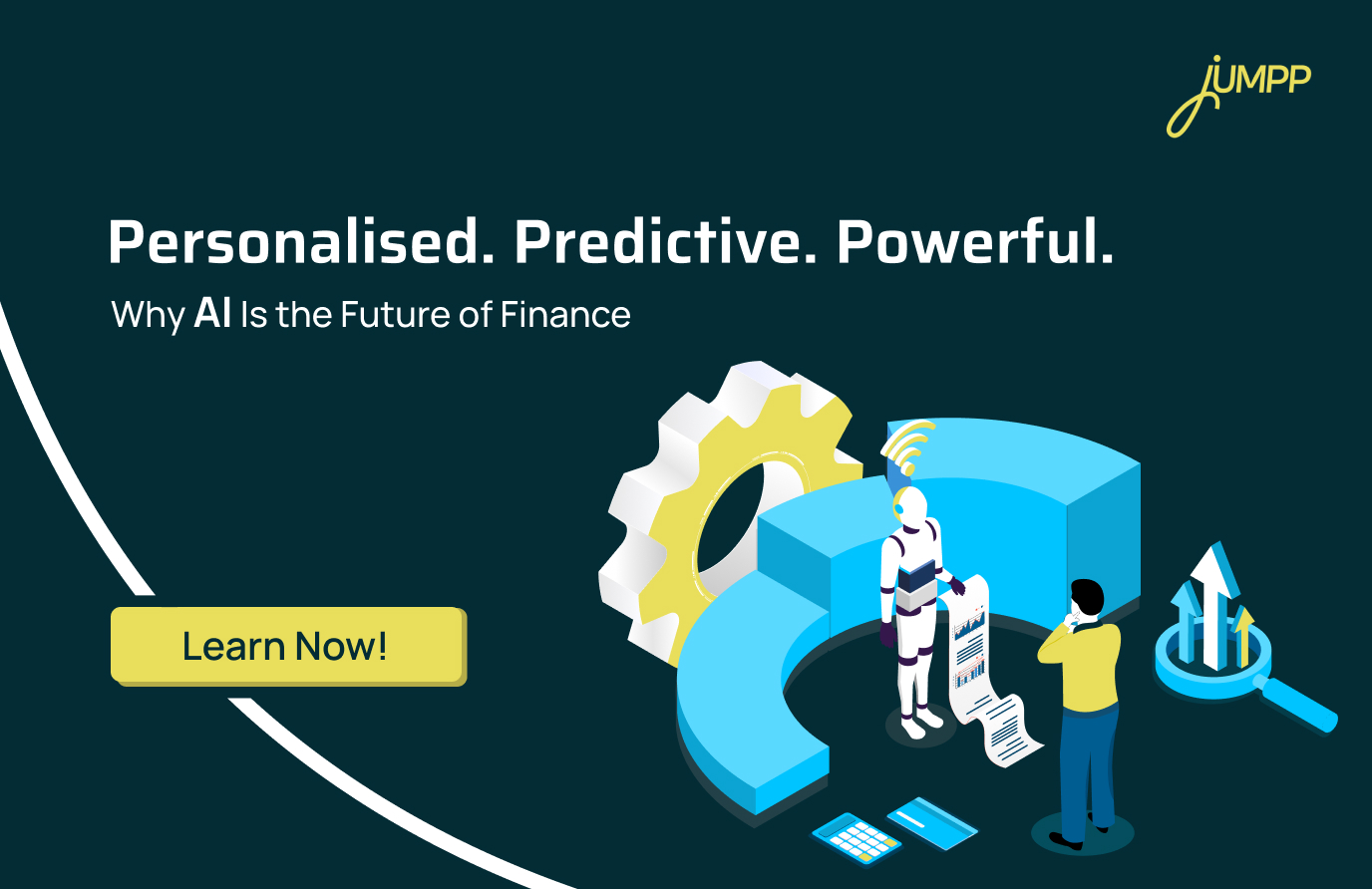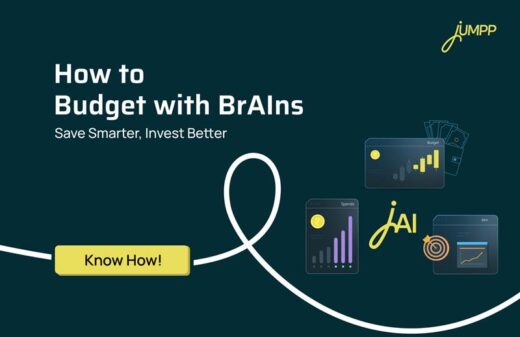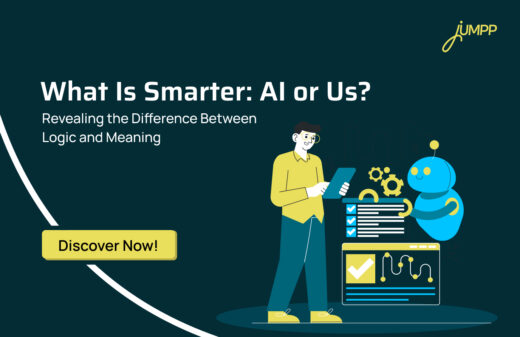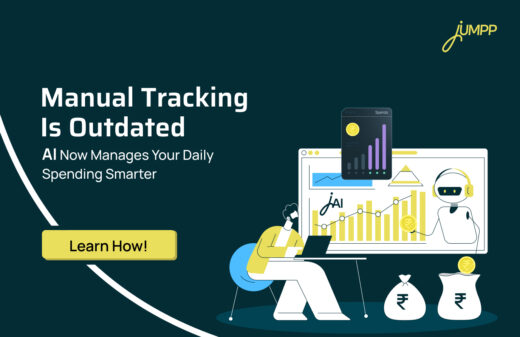AI in Finance in India- Applications, Benefits, and Future Trends

For most Indians, finance has always been about safety, savings, and security. We have grown up trusting fixed deposits, gold, and physical assets. But today, a quiet transformation is taking place in how money is being managed across banks, apps, and financial systems. That shift is powered by Artificial Intelligence. It is already influencing how we borrow, invest, save, and even track our expenses daily. Let’s understand what AI in finance really means, where it is being used, and how it impacts you.
What is Artificial Intelligence in Finance?
AI in finance refers to the use of advanced technologies like machine learning, data analysis, and natural language processing to perform financial tasks that once required human involvement. These tasks include:
- Analysing large volumes of transaction data
- Predicting risk or default
- Making faster decisions about loans or investments
- Personalising financial advice
- Detecting unusual or fraudulent activity
In simple words, it is about using machines to process money-related data more efficiently and intelligently than humans can, especially when the scale is too large to manage manually.
Why is AI Important in Financial Services Today?
Every financial action generates data; every UPI transfer, every EMI paid, every wallet recharge, every bank balance check. India is generating this data at a massive scale with the rise in digital banking and UPI adoption.
Traditional systems are not built to handle such scale or complexity. This is where AI in financial services becomes necessary. It helps:
- Reduce delays
- Make faster and more consistent decisions
- Detect fraud in real-time
- Deliver financial services to more people, even in rural or low-income areas
In short, AI for finance is helping financial systems move from being reactive to being proactive.
AI for Finance in 2025- Trends Every Indian Should Know
Artificial Intelligence (AI) is no longer limited to chatbots or loan approvals. In 2025, it’s becoming a core pillar of financial decision-making.
Here are the top AI in finance trends shaping the future of Indian financial services:
1. Voice-First Banking in Regional Languages
AI-driven voice interfaces are being built to support Hindi, Tamil, Bengali, and more. This means people across India, even those new to smartphones, can check balances, ask queries, or apply for loans using voice commands.
This opens up a new financial world for rural India, first-time users, and non-English speakers.
2. AI-Driven Creditworthiness Without CIBIL Scores
Not everyone has a traditional credit history. But with AI, lenders are now using alternative data like mobile bill payments, rent transactions, and UPI activity to assess creditworthiness.
This allows salaried professionals, other working classes, and students to access credit fairly, without being excluded from the formal lending system.
3. Predictive Personal Finance AI Tools
AI is making financial advice more intelligent and real-time. In 2025, you won’t just get alerts like “your balance is low.” You’ll see suggestions like:
- Move ₹2,000 to your emergency fund before the 20th
- You spent ₹1,800 more than usual on food delivery this month
- Your current portfolio may underperform inflation next year
These insights are personalised, actionable, and grounded in your actual behaviour, not just generic tips.
4. AI in Risk and Fraud Prevention
Banks and financial platforms are deploying AI models that detect anomalies within milliseconds. Whether it’s a suspicious login, a large payment from an unknown device, or a mismatch in location, AI flags, freezes, and alerts faster than any manual system ever could.
This is critical as India’s digital transaction volume continues to grow.
5. Human-Like AI Assistants in Customer Service
By 2025, financial service providers are shifting from chatbots to AI-powered virtual finance assistants that can:
- Understand context
- Answer layered financial questions
- Support users in both English and Indian languages
- Offer personalised responses based on transaction history
These assistants help reduce service wait times while improving customer satisfaction.
6. AI-Powered Document Intelligence
Loan applications, KYC, and insurance claims all involve paperwork. AI tools now extract data from scanned documents, cross-verify entries, and flag errors in real-time.
This speeds up approvals and reduces human mistakes, especially for micro-loans and high-volume cases.
7. AI as a Compliance Partner
With rising regulations from SEBI and RBI, financial companies are using AI to monitor transactions, detect non-compliance, and generate reports automatically.
This reduces the burden on compliance teams and ensures better governance.
8. Integrated AI with Spend Analytics
Whether it’s a business or an individual, spend analysis tools with AI are helping people understand:
- Where money is going
- What can be optimised
- What spending habits signal risk
- How future expenses may impact savings or working capital
For SMEs and salaried workers alike, this brings control and clarity.
9. Responsible AI Frameworks
In 2025, institutions are under pressure to not just adopt AI but to use it responsibly. This includes:
- Being transparent about how decisions are made
- Avoiding bias in algorithms
- Letting users opt out of AI-based profiling
- Maintaining data privacy as per Indian law
This will define how much users trust financial AI.
10. AI and Human Collaboration, Not Replacement
AI is not here to take away human roles.
In short, AI will handle the “how” while humans focus on the “why”.
How AI Is Being Used in Indian Finance — With Examples
1. Faster Loan Approvals
Earlier, a person had to submit multiple documents, wait for days, and go through multiple verification layers before getting a loan. Today, AI can analyse your transaction history, repayment habits, salary inflow, and spending patterns to give a quick yes or no.
This is especially useful for first-time borrowers who may not have a formal credit score but have strong digital activity through mobile wallets, UPI payments, or salary credits.
2. Real-Time Fraud Detection
Imagine your debit card is being used in another state while you are at home. AI can immediately flag this as suspicious and freeze the transaction before any money is lost. It constantly watches for irregular activity, patterns, or location mismatches — and does this without needing human eyes on every transaction.
This protects your account 24/7.
3. Personalised Investment Advice
Not everyone has the same financial goals. Some people want safety. Others want growth. AI tools today can read your income, monthly expenses, family commitments, and risk appetite to suggest plans that are suited to your profile.
For example, someone earning ₹30,000 with a dependent parent will receive a very different investment suggestion than someone earning ₹1.2 lakh with no financial dependents.
This was earlier possible only with a personal financial advisor. AI makes it accessible to everyone. AI in expense management has become the need of the hour!
4. Smarter Budgeting and Expense Tracking
AI-powered platforms can now read your SMS alerts, bank statements, and transaction history to give you a full picture of where your money is going — groceries, bills, subscriptions, or impulse purchases.
This is exactly what jAI — jUMPP AI-powered money assistant is built for.
Finance AI Tools That Are Making This Possible
While users do not always see them, several AI tools for finance work in the background to make these services smarter. These tools can:
- Automatically classify income and expenses
- Calculate eligibility for a loan
- Predict the risk of missing an EMI
- Create personalised savings plans
- Auto-suggest recurring bill payments or tax-saving options
These finance AI tools are now being adopted by banks, NBFCs, fintech platforms, and even insurance providers.
Advantages of AI in Finance
Your spending has patterns. AI sees them before you do.
And that’s where better budgeting begins.
According to recent studies, AI adoption in Indian financial institutions has gone up by over 60 percent in the last 3 years, and more than half of the country’s mid-sized finance players are either using or planning to use AI-based solutions by 2026.
1. Faster Decision Making
AI systems can process thousands of data points within seconds. Whether it’s approving a loan, assessing credit risk, or generating a financial report, AI does the job quicker than manual systems. This reduces turnaround time for customers and boosts efficiency for financial institutions.
2. Removes Human Bias
Traditional financial decisions can be influenced by personal judgment or unconscious bias. AI, when trained properly, follows data-driven rules, which improves fairness in decision-making.
3. Reduces Operational Costs
AI helps reduce the need for repetitive manual work like form processing, KYC checks, or customer queries. This lowers overall cost and allows companies to focus on better customer service and innovation.
4. Improved Risk Management
AI models can detect risk signals that humans might overlook. These models continuously monitor data and update predictions based on new inputs.
5. Enhanced Customer Personalisation
AI helps understand users better. From recommending a specific SIP based on spending habits to sending reminders to save before salary runs out, AI offers truly personalised advice — something traditional banking could never do at scale.
6. Greater Financial Inclusion
AI bridges the gap for individuals who do not have formal credit histories or documents. Using alternate data like mobile usage, rent payments, and digital transaction trends, AI helps bring first-time users into the financial system.
This is especially impactful in India, where large sections of the population still lack formal credit access despite having a digital presence.
7. 24/7 Monitoring and Fraud Prevention
Unlike humans, AI does not sleep. It watches transaction flows, geolocation mismatches, and unusual activity around the clock. This reduces the time between a fraud attempt and system response, keeping customer funds safe.
Challenges of AI in Finance
AI can make money smarter, but what if it gets biased, wrong, or hacked?
In finance, even the smallest glitch can cost big.
1. Data Privacy and Security Risks
AI systems depend heavily on user data, including income, transaction history, personal identity proofs, and more. If this data is not protected properly or is misused, it can lead to major privacy violations.
India is still evolving its data protection framework. Until laws like the Digital Personal Data Protection Act (DPDPA) are fully implemented across financial systems, data misuse remains a valid concern.
2. Algorithmic Bias
AI learns from the data it is trained on. If that data carries bias, whether geographic, gender-based, or economic, the AI will replicate it. This means certain groups might be unfairly denied loans, charged higher interest, or misclassified.
3. Lack of Human Oversight
AI can process data faster, but it still lacks human judgment in nuanced cases. Blind reliance on automation can result in unfair decisions or system errors going unnoticed.
4. Job Displacement Fears
As more manual and routine roles are automated, there is concern about job losses in sectors like banking, insurance, and customer support. While AI creates new roles, it also demands re-skilling, which not everyone may be prepared for.
5. Dependence on Quality Data
AI’s accuracy depends entirely on the quality and freshness of the data it receives. Incomplete, outdated, or unverified data can lead to flawed financial decisions.
In India, where digitisation is still uneven, especially in semi-urban and rural areas, relying entirely on AI for critical decisions could result in unfair outcomes.
6. High Initial Investment
Implementing AI requires a robust technical infrastructure, clean and labelled data, trained talent, and strict compliance monitoring. For small financial institutions or early-stage fintechs, this could mean high upfront costs.
7. Ethical and Regulatory Gaps
Financial AI needs to be explainable. If a customer is denied a loan, they deserve to know why. But many AI systems are black boxes; they provide results without clear reasoning. This creates trust issues and legal grey areas.
The Future of AI in Finance
India’s financial sector is no longer just digitising. It’s becoming intelligent. With millions of digital transactions, evolving customer needs, and growing risks, financial services can no longer afford to rely only on manual systems or rule-based software.
That’s where AI in finance steps in. It is here not to replace humans, but to support sharper, faster, and more inclusive decisions.
But as AI grows, it also brings a responsibility. The need for ethical use of data, transparency in algorithms, and human oversight becomes even more critical. Financial decisions affect lives, families, and futures. And trust is non-negotiable.
For any business in the financial sector, the question is no longer whether to use AI.
It’s how well we can use it to solve real challenges, and serve real people, better, faster, and smarter?
Finance and AI- FAQs
Most likely, yes. As more people trust tech with their money, AI tools in finance, healthcare, and even education could become as common as using a smartphone.
Jobs that require human judgment, emotions, or creativity, such as therapists, writers, teachers, and relationship managers, can never be fully replaced. AI might support them, not replace them.
AI will likely handle tasks like fraud checks, risk analysis, and budgeting support while helping users make faster and clearer money decisions.
There’s no single “best” AI. Different platforms use different tools like machine learning, natural language processing, or predictive models, depending on the problem they’re solving.
AI is used to detect fraud, automate customer service, track expenses, offer budgeting tips, and even approve loans faster by analysing patterns in real time.
AI is already helping with faster decisions, fraud detection, and smarter budgeting. In 2025, it’s expected to become more personal and easier to understand for everyday users.






